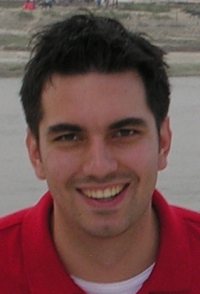Životopis predavača
Dr Mircea Popescu (M’98 – SM’04 – F’14) is Chief Technology Officer for Motor Design, Ltd., UK and has more than 35 years of engineering experience. Dr. Popescu received PhD degree from University "Politehnica" Bucharest, Romania, and DSc (Tech) degree from Helsinki University of Technology, Finland in 1999 and 2004 respectively. Earlier in his career, he was with Helsinki University of Technology (now Aalto University) in Finland and with the SPEED Lab at University of Glasgow, UK.
Dr. Popescu published more than 150 papers and his publications have received three IEEE best paper awards. He is co-author of the book "Multiphysics Simulation by Design for Electrical Machines, Power Electronics and Drive", Wiley, 2018, ISBN: 978-1-119-10344-8.
His consultancy contributions for industry are incorporated in many state-of-the-art products. Current major projects include ReFreeDrive, rare-earth free e-drives featuring low cost manufacturing, under EGVI Horizon 2020 program.
An IEEE Fellow, Dr. Popescu acted as IEEE IAS Electrical Machines Committee Officer between 2010 – 2017 and 2013-2016 Distinguished/Prominent Lecturer IEEE IAS Region 8.
Sažetak
Transport electrification is seen as one of main solutions to reduce global CO2 emissions and increased demand of mechanical energy can be provided by electrical energy. The best energy conversion systems are undoubtedly the combination: electrical machines + power electronics + batteries.
The increasing demand of full electric vehicles arises specific challenges in terms of design for manufacturing, low weight, material costs and material supply chain. There is a strong interest to reduce the volume and cost of active materials in propulsion motor technologies beyond their current state-of‐art, with a strong focus on industrial feasibility for mass production. Potential solutions include increased motor speeds and higher pole numbers and/or the adoption of rare earth free topologies such as reluctance (switched and synchronous) and induction machines. As there can be significantly different usage and performance requirements across e-mobility applications adopting a common standard of motor design is unlikely to yield the optimum in terms of overall system efficiency and electric vehicle range. These considerations will be discussed and compared.
Cutting-edge sensitivity analysis and multi-objective optimisation techniques will be applied in the design of an electric motor for a PHEV traction application. Each candidate solution will be evaluated in terms of electromagnetic, thermal and mechanical behaviour across the full operating envelope. The optimisation will generate a Pareto front which allows efficiency over a drive cycle to be traded off against motor cost. This approach utilises a high performance or cloud computing infrastructure to deliver a truly revolutionary design workflow.






